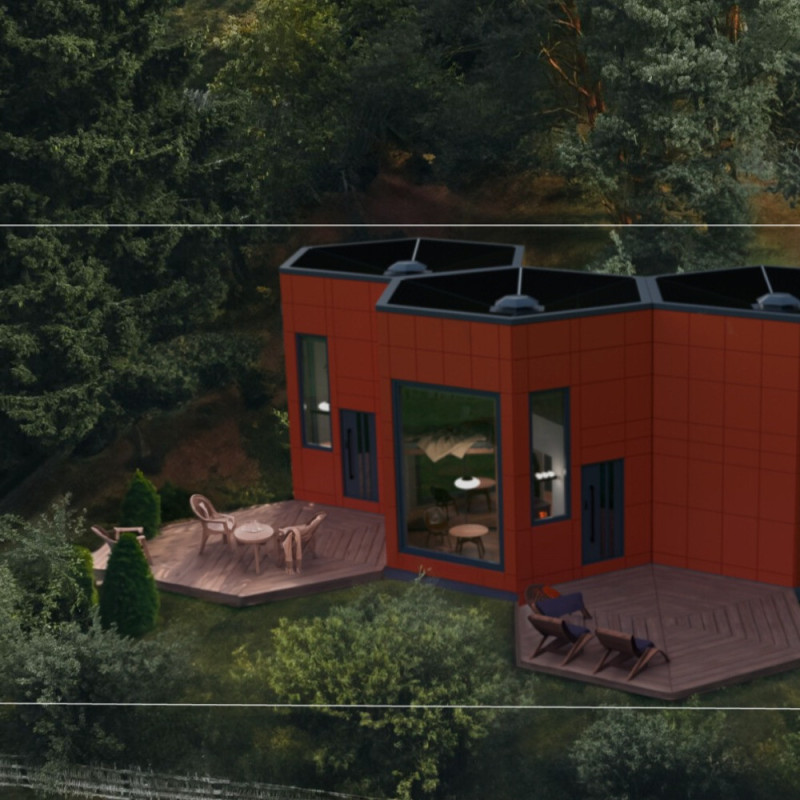5 key facts about this project
From the outset, the architecture reflects a commitment to sustainability and community integration. The design integrates natural elements and local materials, showcasing the architects' understanding of the surrounding environment while respecting regional identity. The façade, characterized by a blend of [specific materials such as wood, glass, and concrete], merges seamlessly with the landscape, creating a dialogue between the built environment and nature. This approach highlights the project's functionality, ensuring it serves the intended purpose while being visually cohesive with its backdrop.
In terms of layout, the project maximizes its spatial potential by employing an open-plan design that encourages fluid movement and interaction among users. Key areas within the structure, such as [mention specific spaces like community rooms, workspace, or recreational areas], are designed to foster collaboration and connectivity. Each space is thoughtfully positioned to optimize natural light and ventilation, enhancing the overall comfort and usability of the environment.
Attention to detail is paramount in this architectural design. Features such as [describe any notable architectural details, like large windows, overhangs, or outdoor spaces] not only improve functionality but also enrich the aesthetic quality of the building. The use of sustainable technology, such as energy-efficient systems and rainwater harvesting solutions, underscores a forward-thinking approach that prioritizes environmental stewardship. This is particularly significant in today’s context, where sustainable architecture is increasingly essential.
One of the standout aspects of the project is its integration of art and culture through design. Elements in the architecture reflect local traditions and artistic expressions, contributing to the project's narrative as a community hub. This cultural resonance is evident in [mention specific design motifs, patterns, or symbols incorporated into the architecture], which serve as a celebration of the community's heritage while also offering a unique identity to the space.
The unique design approaches adopted in this architecture project highlight innovative strategies that prioritize user experience. Dynamic spaces that adapt to various functions, alongside a commitment to inclusivity and accessibility, are central themes. For instance, the layout ensures that all areas are navigable for individuals with diverse needs, reinforcing a sense of community and belonging.
This architectural endeavor not only stands as a physical structure but also embodies a vision for a sustainable future. Its thoughtful engagement with environmental, cultural, and technological aspects illustrates how architecture can enhance community life. Inviting readers to delve deeper into this project is essential, as further exploration of the architectural plans, architectural sections, and various architectural designs will provide richer insights into the unique ideas that shaped this project. Each element reflects a dedication to creating spaces that are not only functional but meaningful within the fabric of the community. For those interested in a deeper understanding of the nuances and intricacies of this architectural achievement, exploring the full project presentation will shed light on the comprehensive vision that guided its creation.


 Łukasz Wawrzyniak
Łukasz Wawrzyniak 























